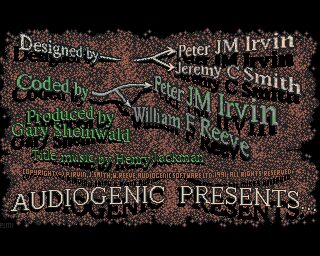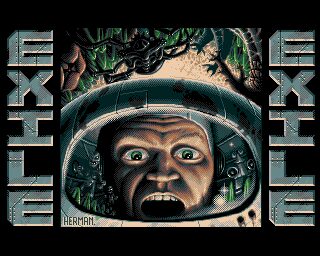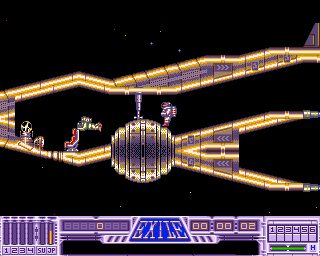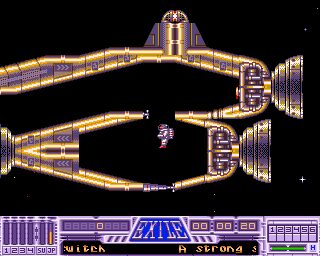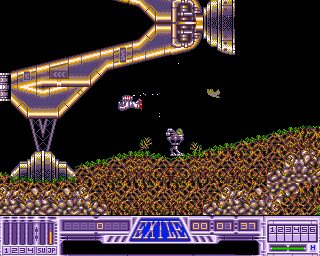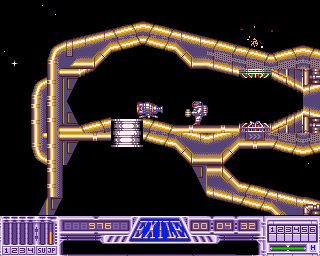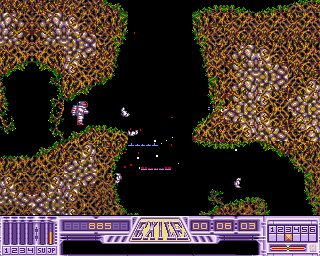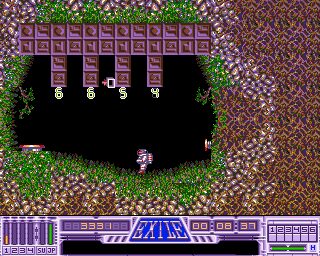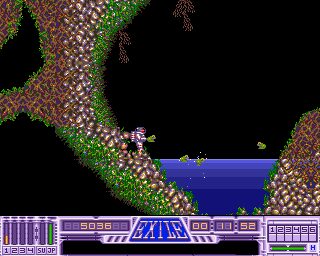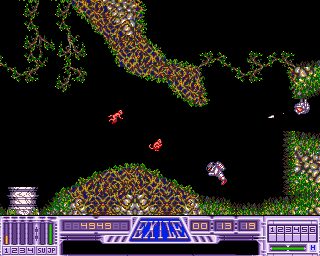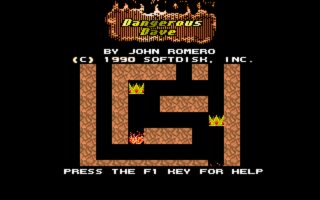Exile is an action video game ported by Audiogenic to the Amiga, Commodore 64, and Atari ST in 1991. The original title was developed in 1988 by Superior Software for the BBC Micro.
The game developer was Peter Irvin, also known for directing the successful Starship Command shooter in 1983 for the BBC.
Mike Finn is the main character of the adventure and one of the leaders of a space exploration organization called Columbus Force. In this mission, the hero must enter a disabled ship and rescue Commander David Sprake and his team. Meanwhile, the villain is a psychotic engineer named Triax, who presents himself as the rival to beat and advances the plot at the beginning of the game.
Exile belongs to the so-called Metroidvania genre. You are free to explore the game world as you wish, walking or flying with your jetpack.
The game has many innovations and features that are rare for contemporary entries. First of all, the enemies have an advanced artificial intelligence, by which they adapt to their environment and attack the player if he enters their field of vision, which will change the music. This is a far cry from classic games where enemies run around shooting at the wall if the protagonist is behind it. Also, the map is asymmetric, and there are several ways to advance the plot, making the title not totally linear. In these multi-directional scenarios, the protagonist must interact with enemies, allies, items, and various survival resources, such as different weapons or a Jetpack. Finally, the user can mark his own checkpoints, where he will be automatically transported on occasions when he is about to die.
Compared to the original version of Exile, the Amiga port took a much more realistic graphic twist. With more power and better graphics hardware, the Amiga version moved away from the BBC version aesthetics, with colors that are much more realistic. This does not mean that the Amiga version does not have its style. Space is represented by a black background that contrasts with the land and characters in the level, which usually have brighter and more striking colors. Besides, the borders of the structures have a different color from its inside. This is a very marked stylistic decision because the edges are generally occupied by more fluorescent or striking colors to the rest of the composition. This generates a reliable indicator to the protagonist regarding where the terrains are and forms a very particular and memorable aesthetic for the fans of this installment.
Despite receiving somewhat unfair criticism regarding the very well achieved audiovisual part, the fans received the title. If you want to rediscover a cult game, very advanced for its time, this is your opportunity. The Amiga version only enhances the experience even more.

